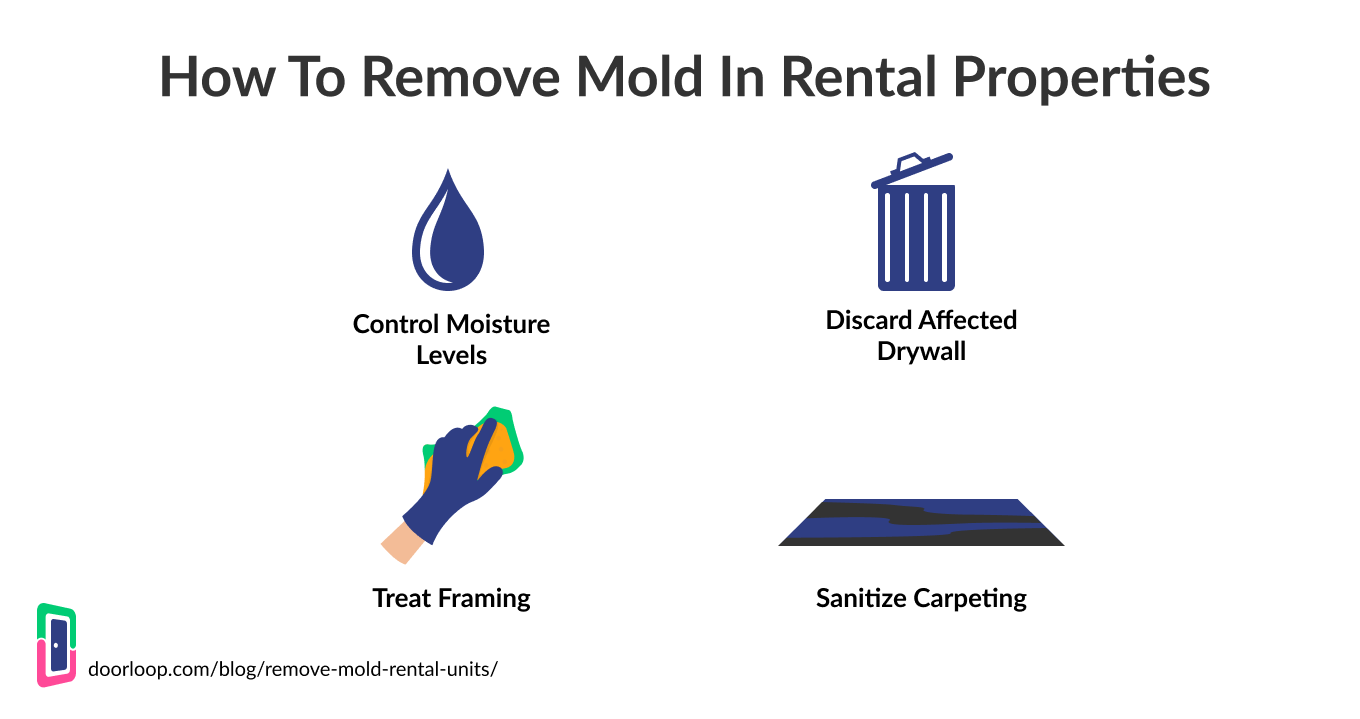Mold growth in rental properties can be a significant concern for both landlords and tenants. Addressing mold issues promptly and effectively is crucial to maintain a safe and healthy living environment. In this blog, we will explore the responsibilities of landlords and tenants in mold cleaning, as well as provide guidance on effective remediation techniques to tackle mold growth in rental properties.
Responsibilities of Landlords and Tenants
- Reporting and Communication
Tenants should promptly report any signs of mold to their landlords or property managers. Landlords, on the other hand, must establish clear communication channels to ensure tenants feel comfortable reporting mold concerns without fear of repercussions. Open and transparent communication is essential for addressing mold issues promptly.
- Landlord’s Responsibility
Landlords have a legal obligation to provide a mold-free living environment for their tenants. This includes conducting regular inspections, addressing moisture issues promptly, and ensuring proper ventilation. Landlords should be proactive in preventing mold growth by maintaining the property’s structural integrity and promptly addressing any water leaks or plumbing issues.
- Tenant’s Responsibility
Tenants also have a role to play in preventing mold growth and maintaining a clean living space. They should promptly report any water leaks, plumbing issues, or excessive moisture to their landlords. Tenants should also take preventive measures such as proper ventilation, using exhaust fans in high-moisture areas, and promptly cleaning up spills or leaks.
Effective Mold Cleaning Techniques
- Safety Precautions
Before starting the mold cleaning process, both landlords and tenants should prioritize safety. This includes wearing protective gear such as gloves, goggles, and masks to prevent exposure to mold spores. Proper ventilation and adequate lighting in the affected area are also essential.
- Dry the Area
Mold thrives in moist environments, so the first step in mold cleaning is to address the source of moisture. Fix any leaks or water intrusion issues. Ensure the affected area is completely dry before proceeding with the cleaning process. Use fans or dehumidifiers to expedite the drying process if necessary.
- Remove Moldy Materials
If porous materials such as carpets, wallpaper, or drywall are contaminated with mold, they may need to be removed and replaced to effectively eliminate the mold. Proper disposal of moldy materials is crucial to prevent further contamination.
- Cleaning Solutions
There are several effective cleaning solutions that can be used to remove mold from non-porous surfaces such as tiles, countertops, or bathroom fixtures. Common solutions include a mixture of water and detergent, vinegar, hydrogen peroxide, or commercial mold cleaners. Apply the cleaning solution and scrub the affected area using a brush or sponge.
- Ventilation and Prevention
After cleaning, ensure proper ventilation in the area to prevent moisture buildup. Use exhaust fans, open windows, or install dehumidifiers if necessary. Regularly inspect the property for any signs of moisture or leaks and address them promptly to prevent future mold growth.
Conclusion
Mold cleaning in rental properties requires collaboration between landlords and tenants to ensure a safe and healthy living environment. Landlords have a responsibility to maintain the property, address moisture issues promptly, and provide a mold-free space. Tenants should promptly report mold concerns and take preventive measures to avoid mold growth.
By following effective mold cleaning techniques, such as addressing moisture sources, removing moldy materials, and using appropriate cleaning solutions, landlords and tenants can effectively remediate mold growth in rental properties. Regular communication and proactive maintenance will contribute to a healthier living environment for tenants and protect the property’s long-term value.
Remember, both landlords and tenants should consult professionals for extensive mold growth or if there are concerns about hidden mold. By working together, landlords and tenants can ensure a mold-free, safe, and comfortable living environment in rental properties.

